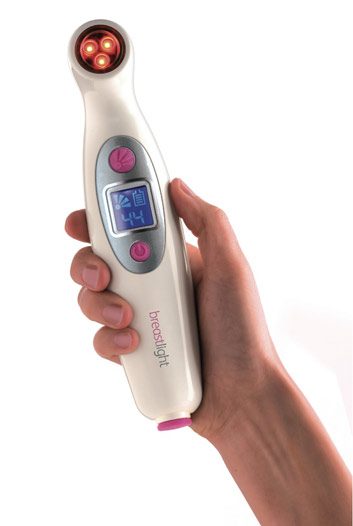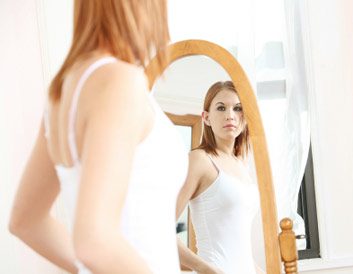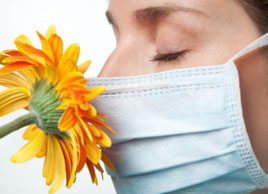
Q&A: What’s the best way to treat a bee sting?
Fewer than one percent of people have severe allergic reactions to bee stings (including hives, vomiting and fainting). If you or someone with you has been stung and shows symptoms of an allergy, call 9-1-1 right away.
But usually, a bee sting isn’t a big deal. Be quick, and scrape the stinger out of the skin using your fingernail or a credit card. Don’t squeeze it or you’ll release more venom.
If you have meat-tenderizing powder in your spice rack, make a paste with ice-cold water and apply it for 10 minutes. (An enzyme in the tenderizer breaks down the venom.) Otherwise, use toothpaste: It’s among the world’s best home remedies for bee-sting relief. An oral antihistamine will reduce swelling and itching. Apply ice wrapped in a cloth for 20 minute intervals; the coldness constricts blood vessels, slowing the spread of the venom.
New at-home tool shines a light on breasts
You can use a handheld device to literally see inside your body. Breastlight helps familiarize women with their breasts and detect changes. (It’s not intended to replace medical screening.) In a dark room, holding the tool to your breast allows you to see through it and look for any dark areas. See your doctor if you notice anything unusual. Starting summer 2009, it’ll be at Rexall and Rexall Pharma Plus. ($150)

New at-home tool shines a light on breasts
You can use a handheld device to literally see inside your body. Breastlight helps familiarize women with their breasts and detect changes. (It’s not intended to replace medical screening.) In a dark room, holding the tool to your breast allows you to see through it and look for any dark areas. See your doctor if you notice anything unusual. Starting summer 2009, it’ll be at Rexall and Rexall Pharma Plus. ($150)

Both Canadian and American women have low self esteem: research
Mirror, mirror on the wall, who spends more time looking at themselves: Canadian or American women? It looks like our neighbours log more mirror time each day, according to statistics from global market researcher Synovate: 48 percent of American women spend five to 15 minutes a day looking n the mirror while 39 percent of Canadian women spend that much time in front of the looking glass. But when it comes to what we see in the mirror, it appears we’re all suffering from low self-esteem. Only seven percent of Canadian and six percent of American women say they feel beautiful and wouldn’t change a thing about their appearance. So next time you’re in front of the mirror, say to yourself: “You look beautiful!” And believe it.
Source: InFact Beauty Myths, 2008

New allergy research uncovers risk factors and treatments
Allergies are on the rise and we may soon know why. A group of scientists is investigating allergy risk factors such as genetics, the environment and how foods are processed.
The project also focuses on other allergies, such as allergic asthma, which has risen drastically in areas with rapid urban growth such as China and India. “Evidence suggests that our bodies need to be exposed to certain microbes to avoid developing allergies,” says Mahesh Rao, who is conducting a study on 20,000 homes in southern India.
And a North American clinical trial could make it easier to treat allergies. The study is examining the use of oral doses of grass or ragweed pollen to see if they boost allergy immunity. This immunotherapy treatment is currently available in Europe but not yet approved in Canada. The study is still ongoing, but experts are already touting the potential benefits. – Rhea Seymour

New online
As of August 24, 2009, 245, 970 people have joined the group “Hey Facebook, breastfeeding is not obscene!” after the site removed photos of mothers nursing with a fully exposed breast.
**What are your thoughts on breastfeeding in public? Tell us in the forums.
Quick tip: Put on some music!
It’ll put a smile on your face-and new research shows it will also help your heart. Enjoying music reduced heart rate and blood pressure for coronary heart disease patients, reveals a Temple University research-review.
Related:
Best Health Magazine: Summer 2009
Quick tip: Put on some music!
It’ll put a smile on your face-and new research shows it will also help your heart. Enjoying music reduced heart rate and blood pressure for coronary heart disease patients, reveals a Temple University research-review.
Related:
Best Health Magazine: Summer 2009

Quick tip: Put on some music!
It’ll put a smile on your face-and new research shows it will also help your heart. Enjoying music reduced heart rate and blood pressure for coronary heart disease patients, reveals a Temple University research-review.
Related:
Best Health Magazine: Summer 2009
